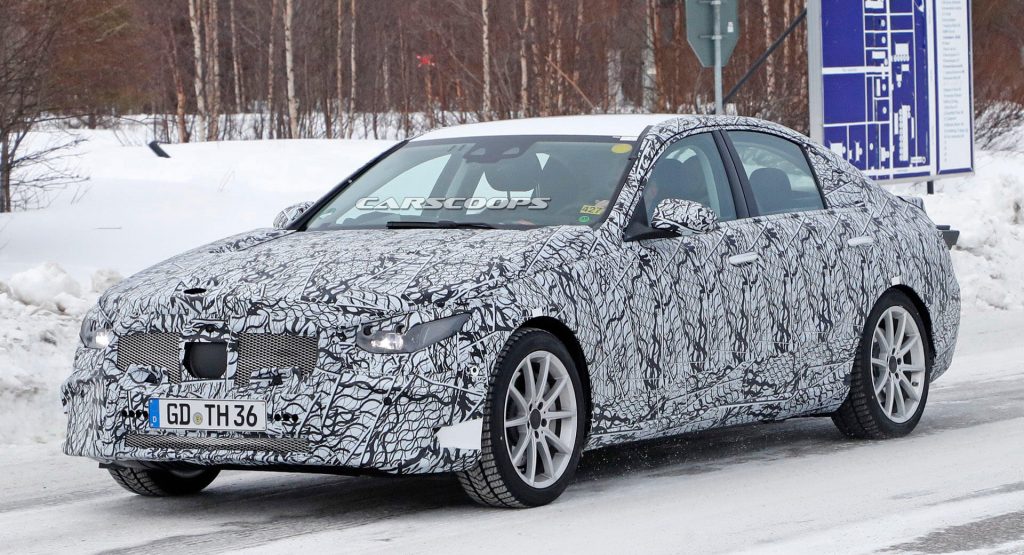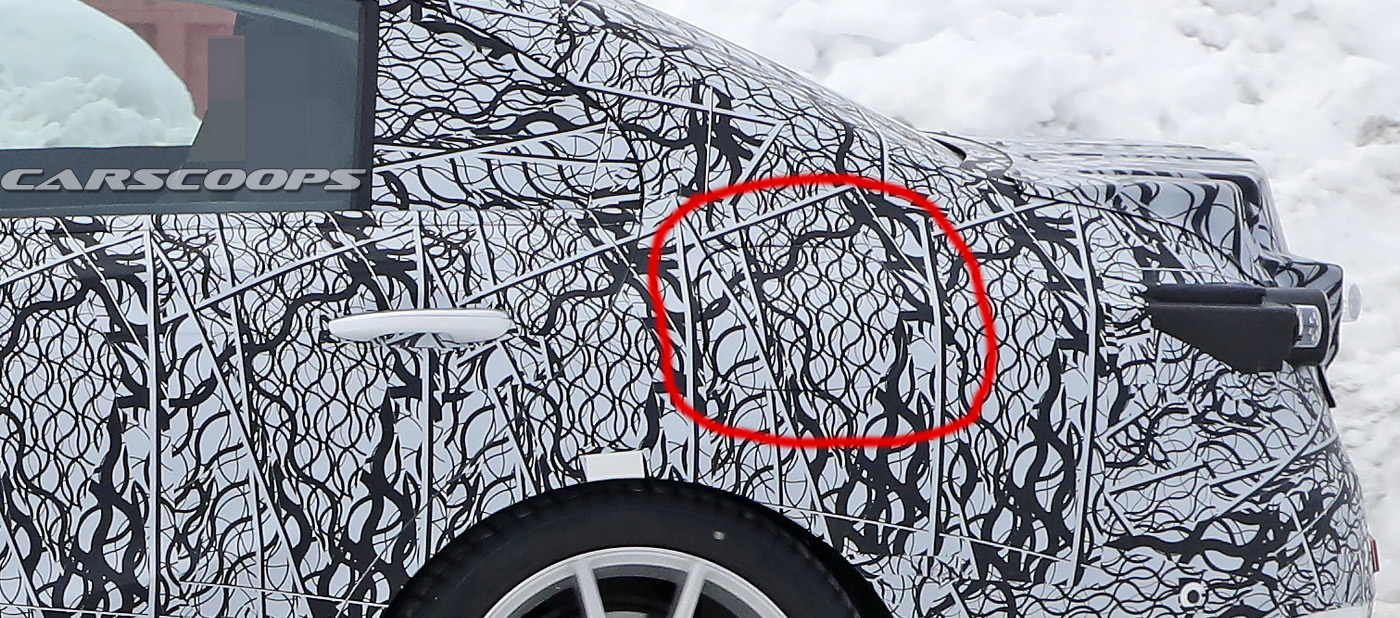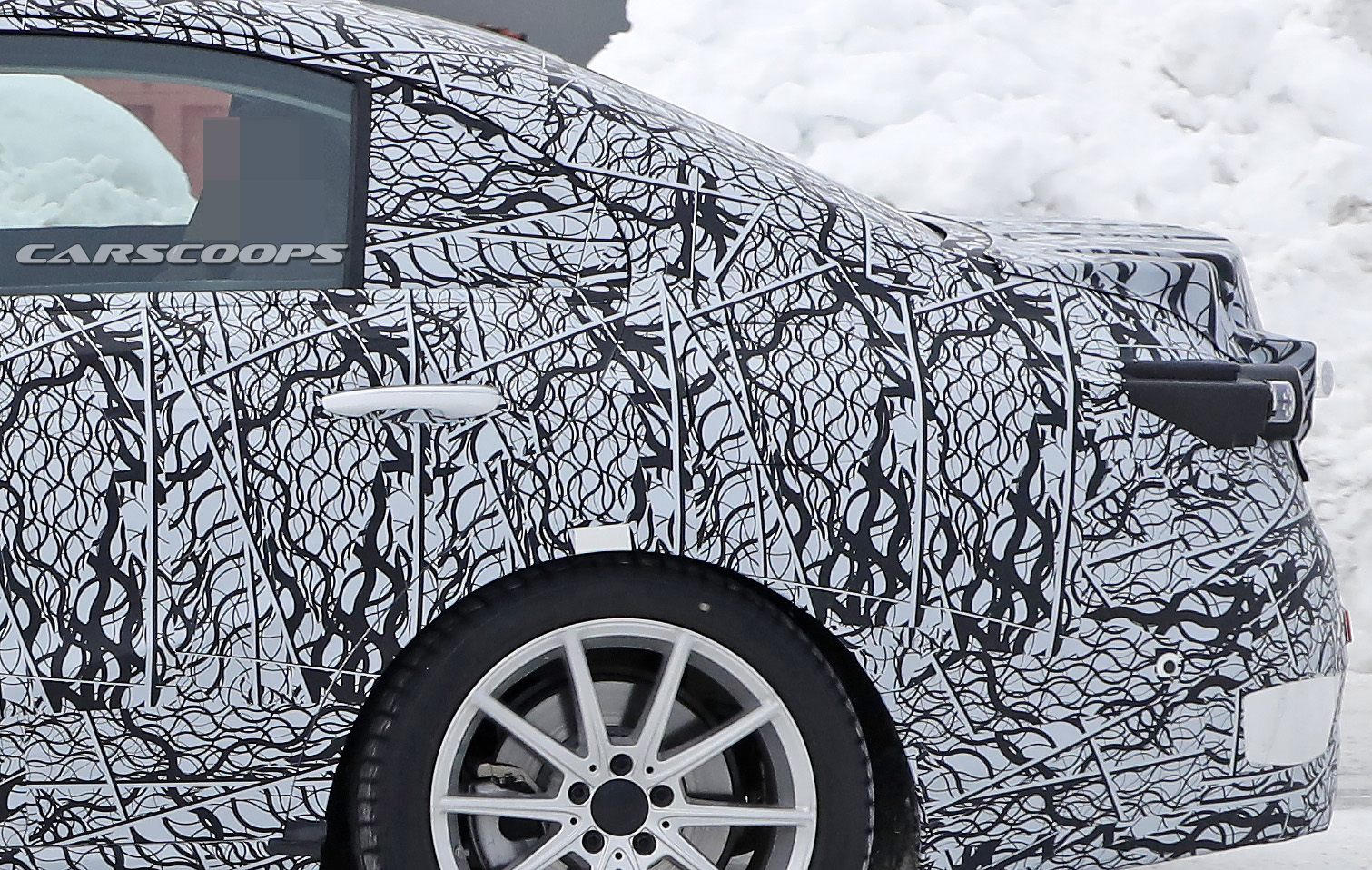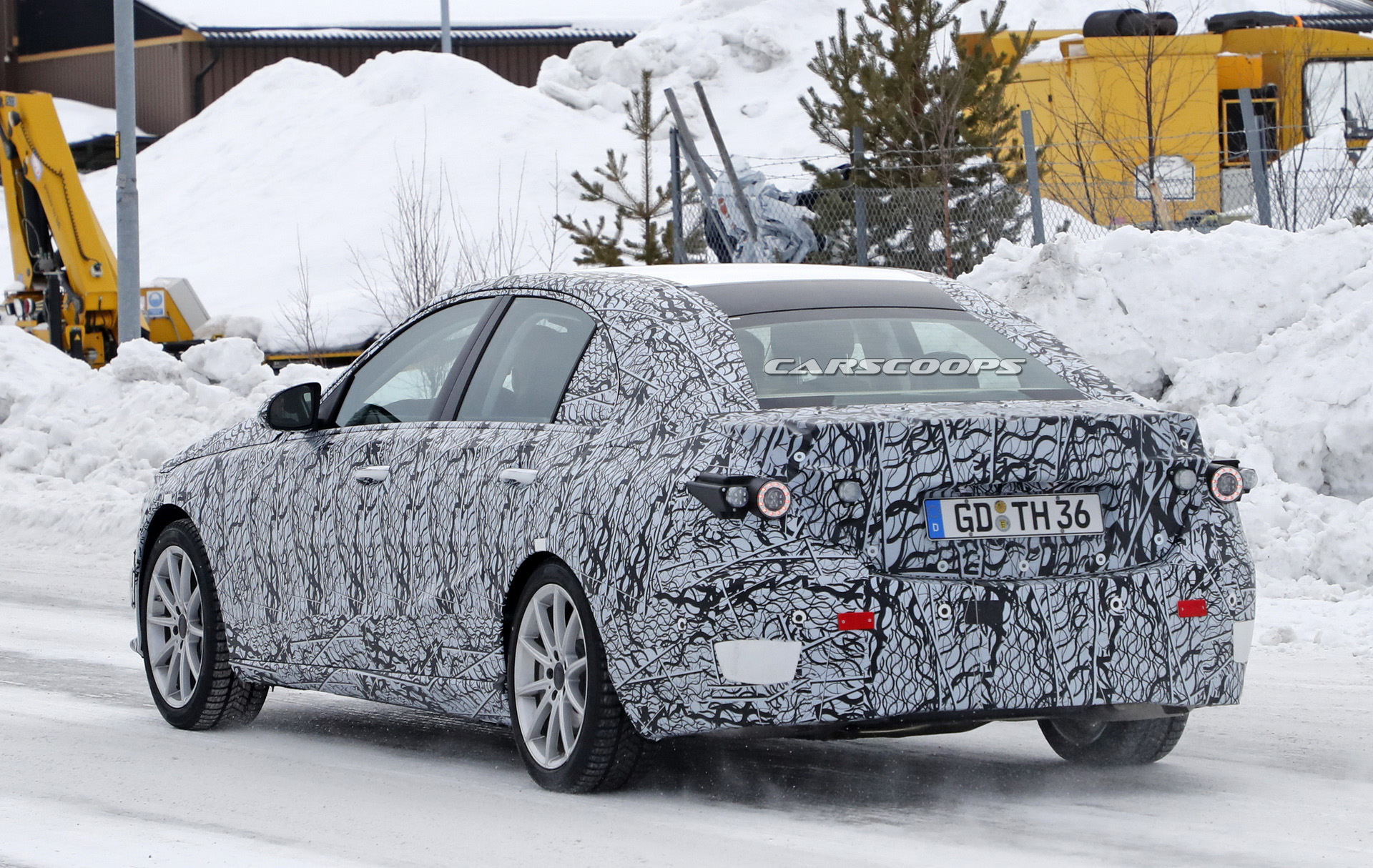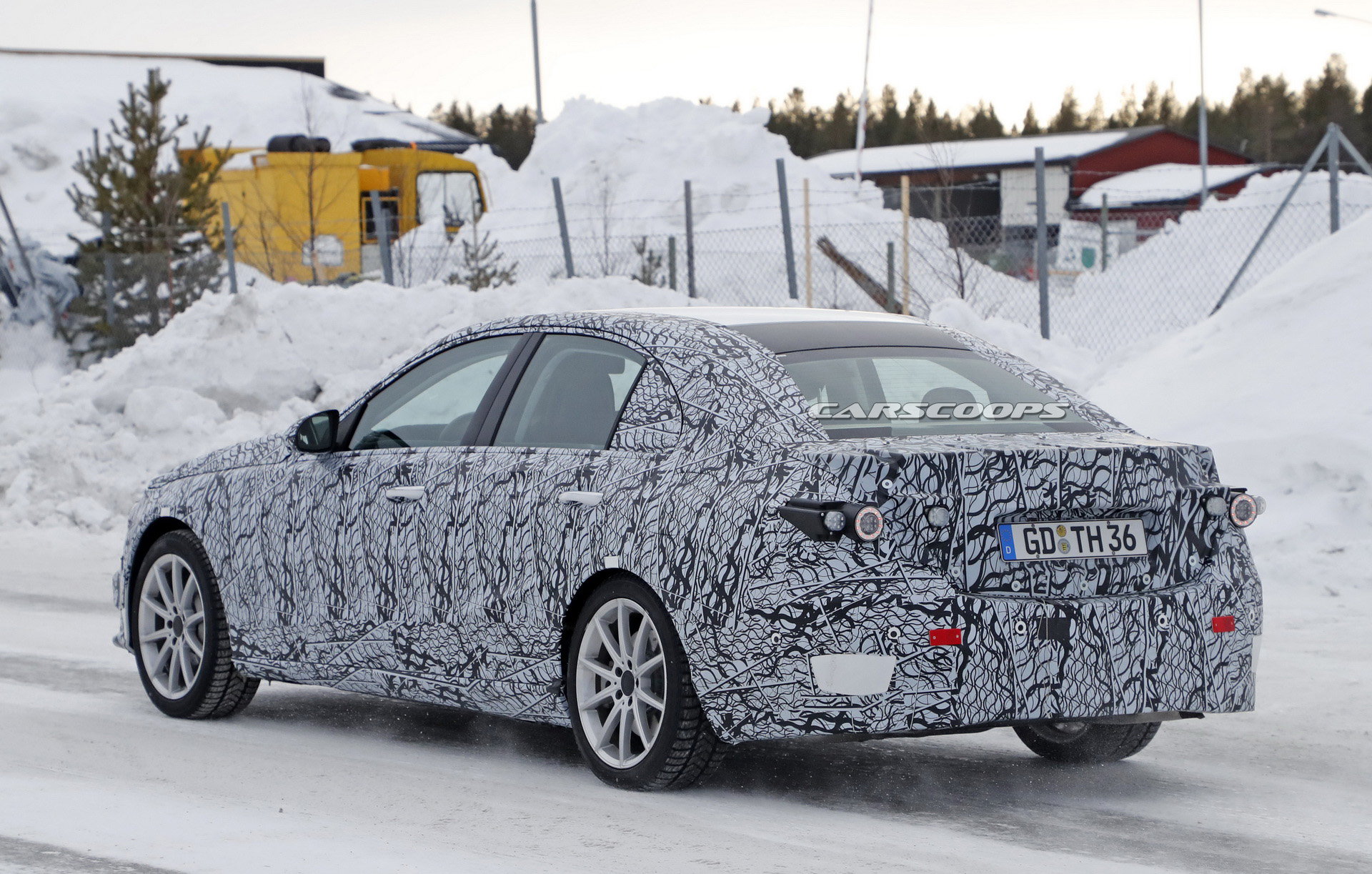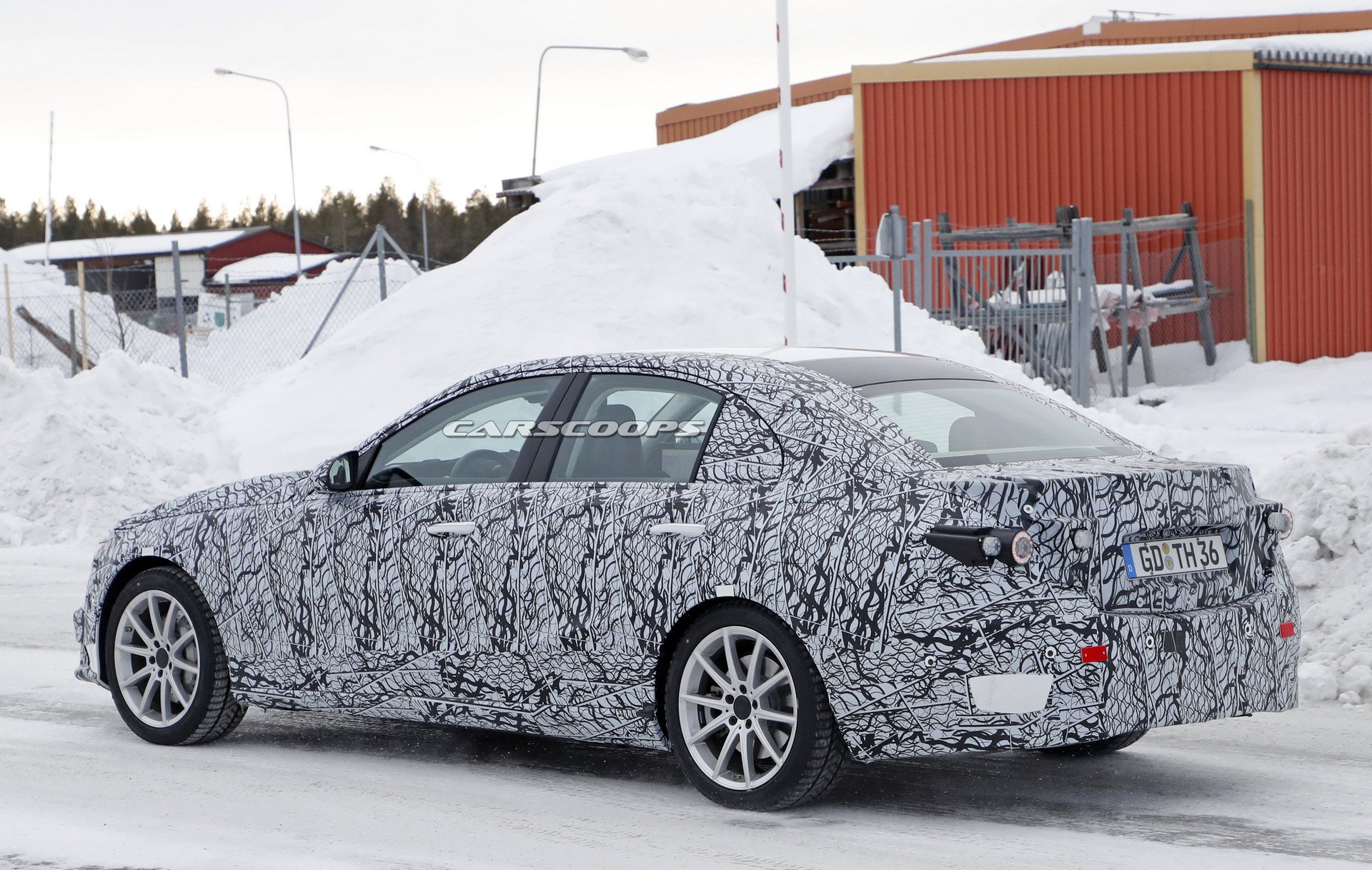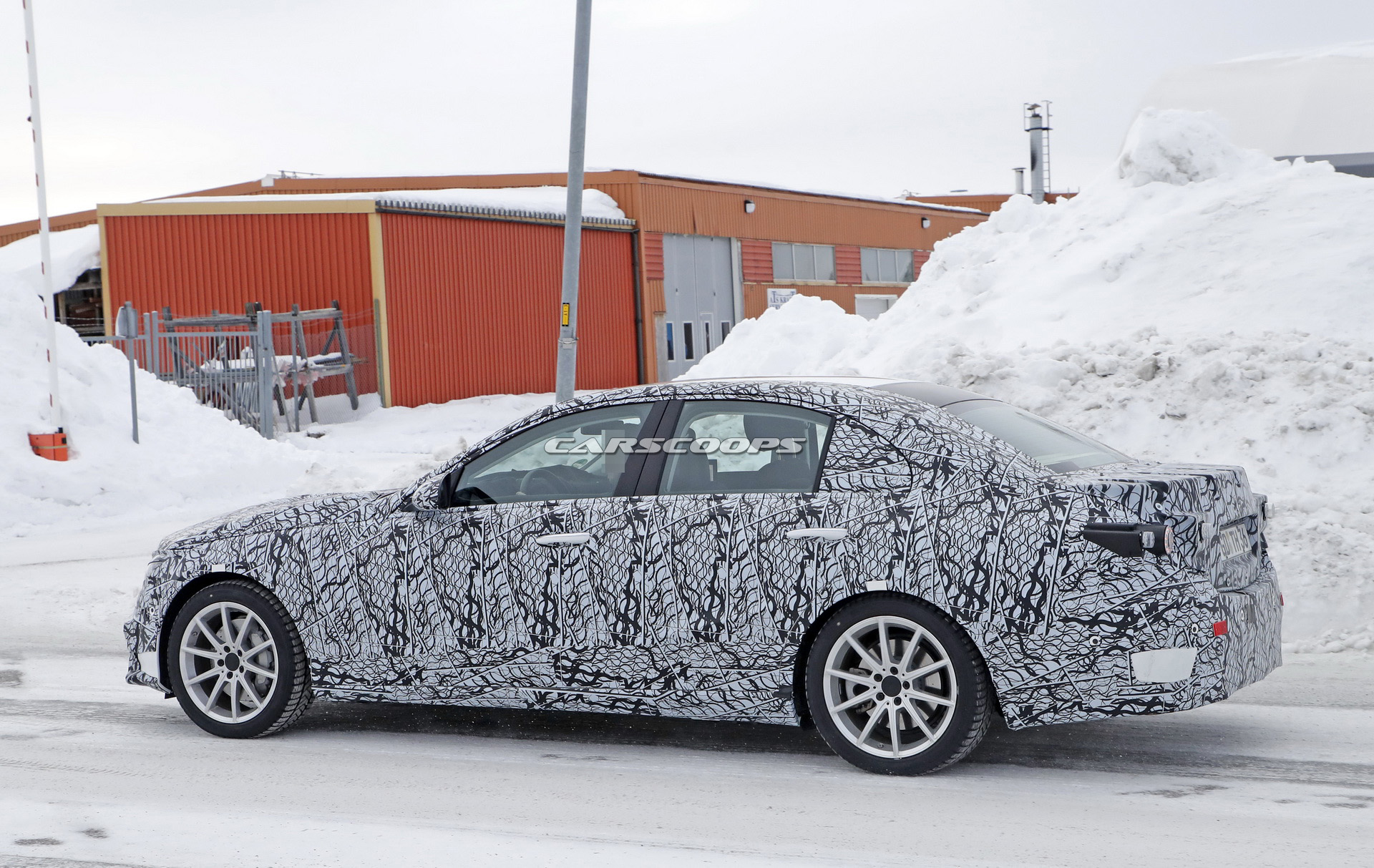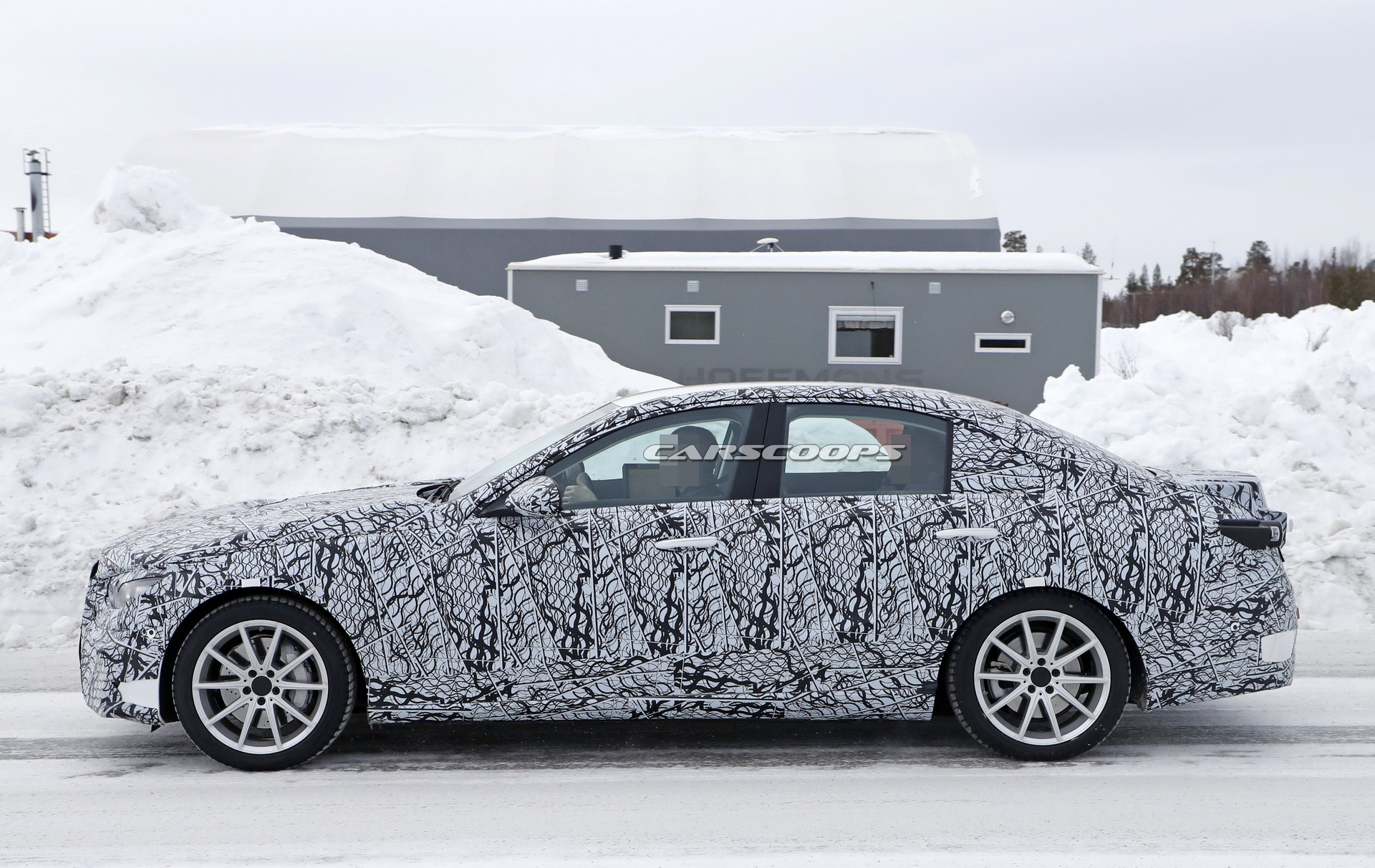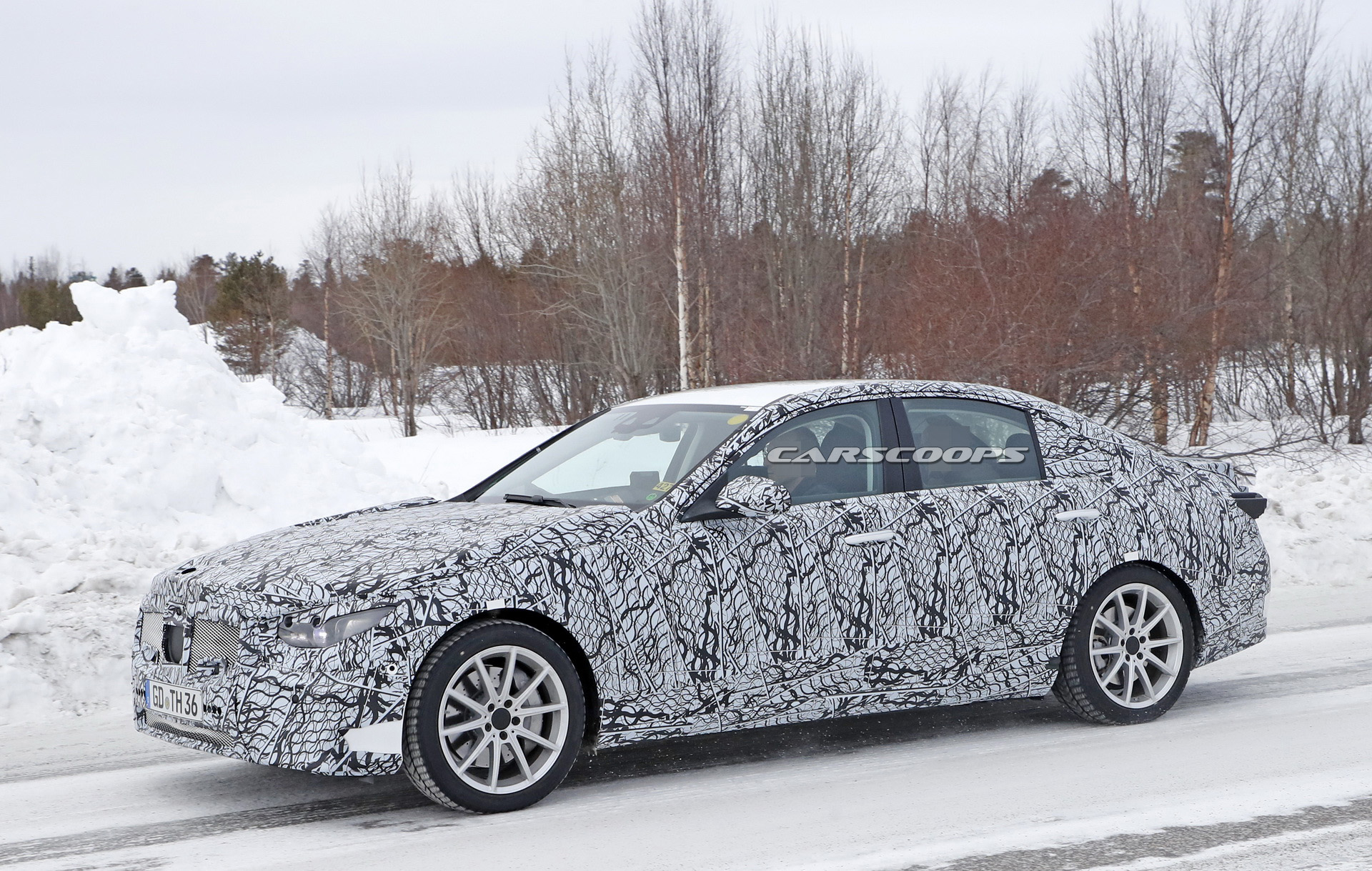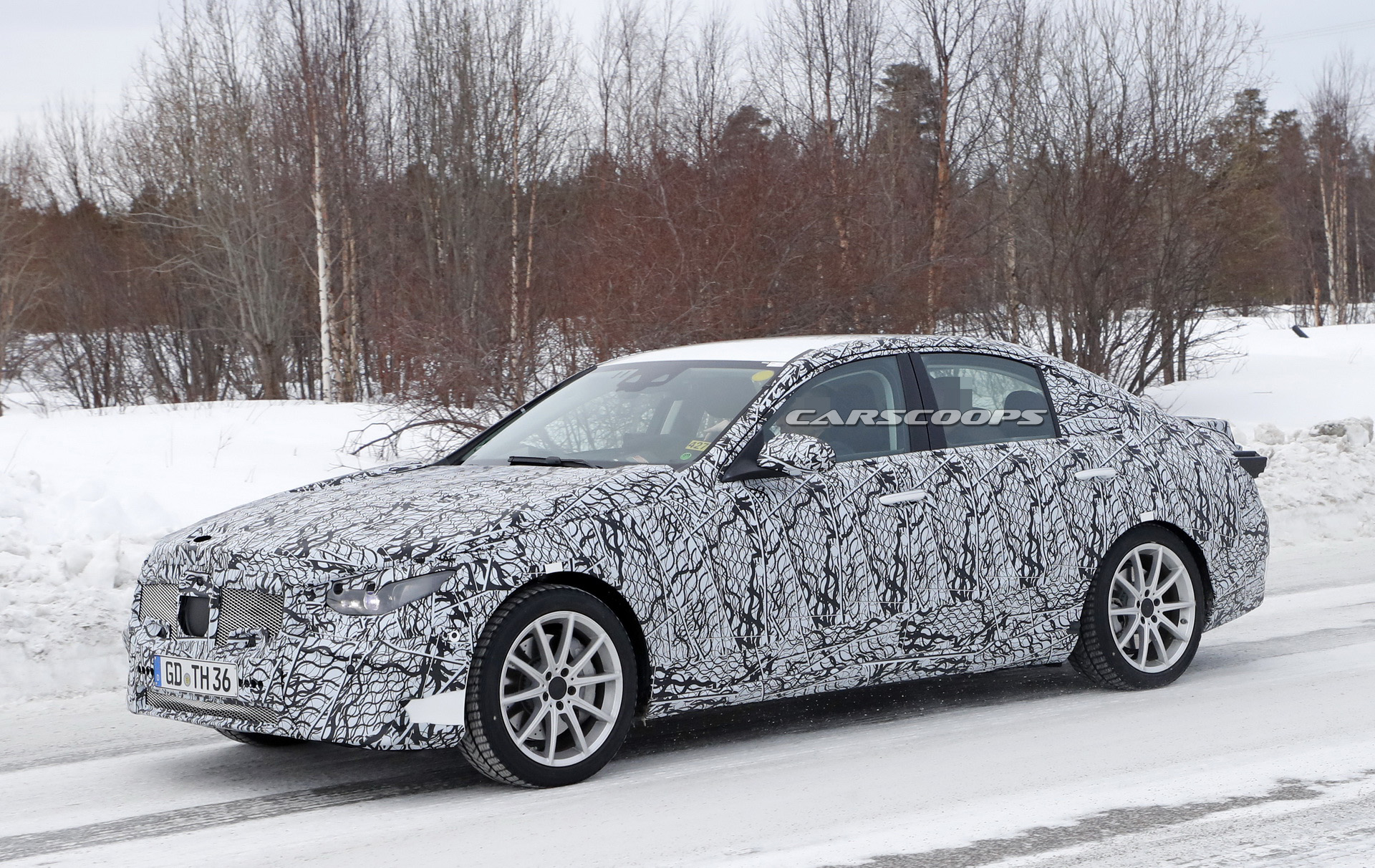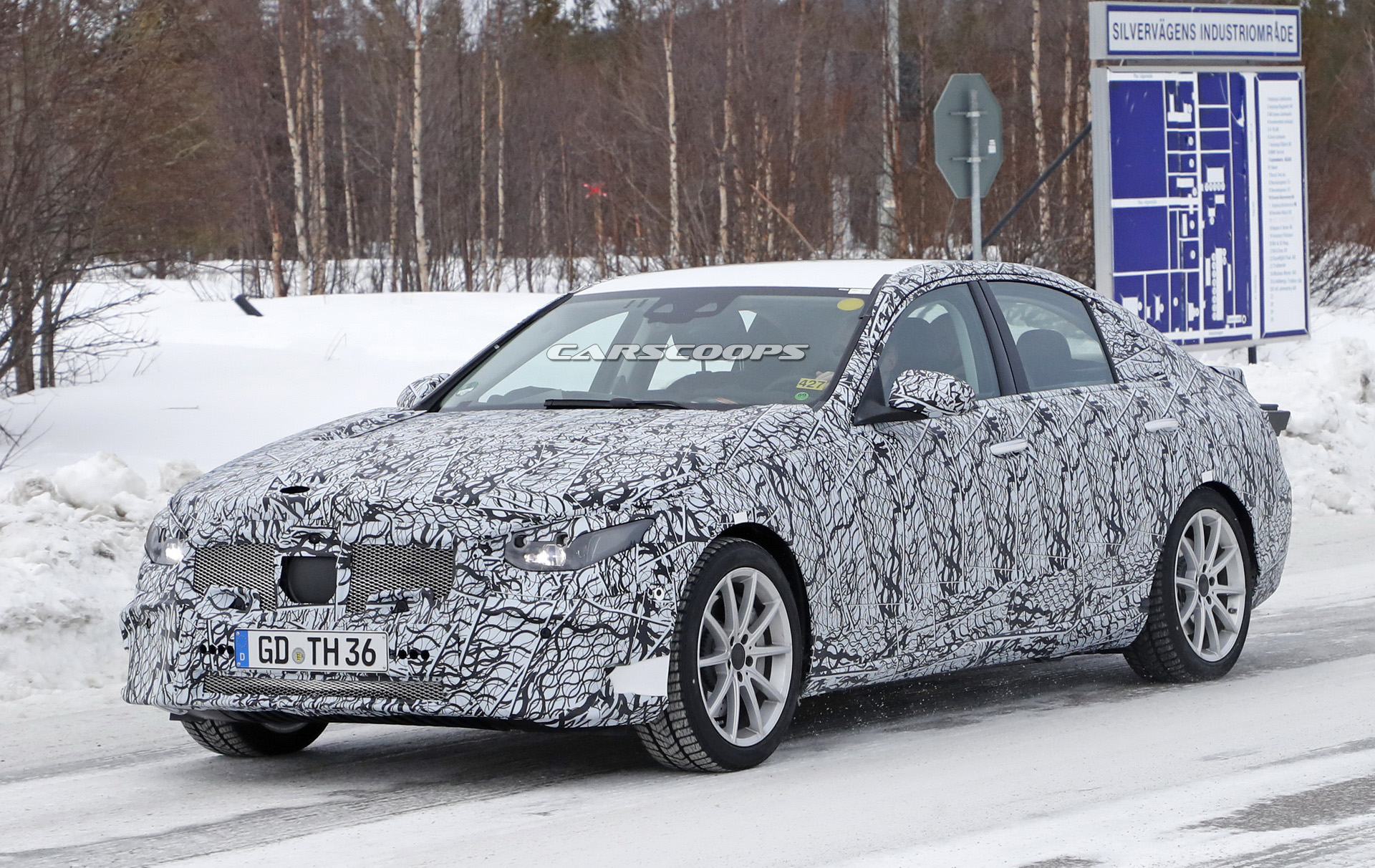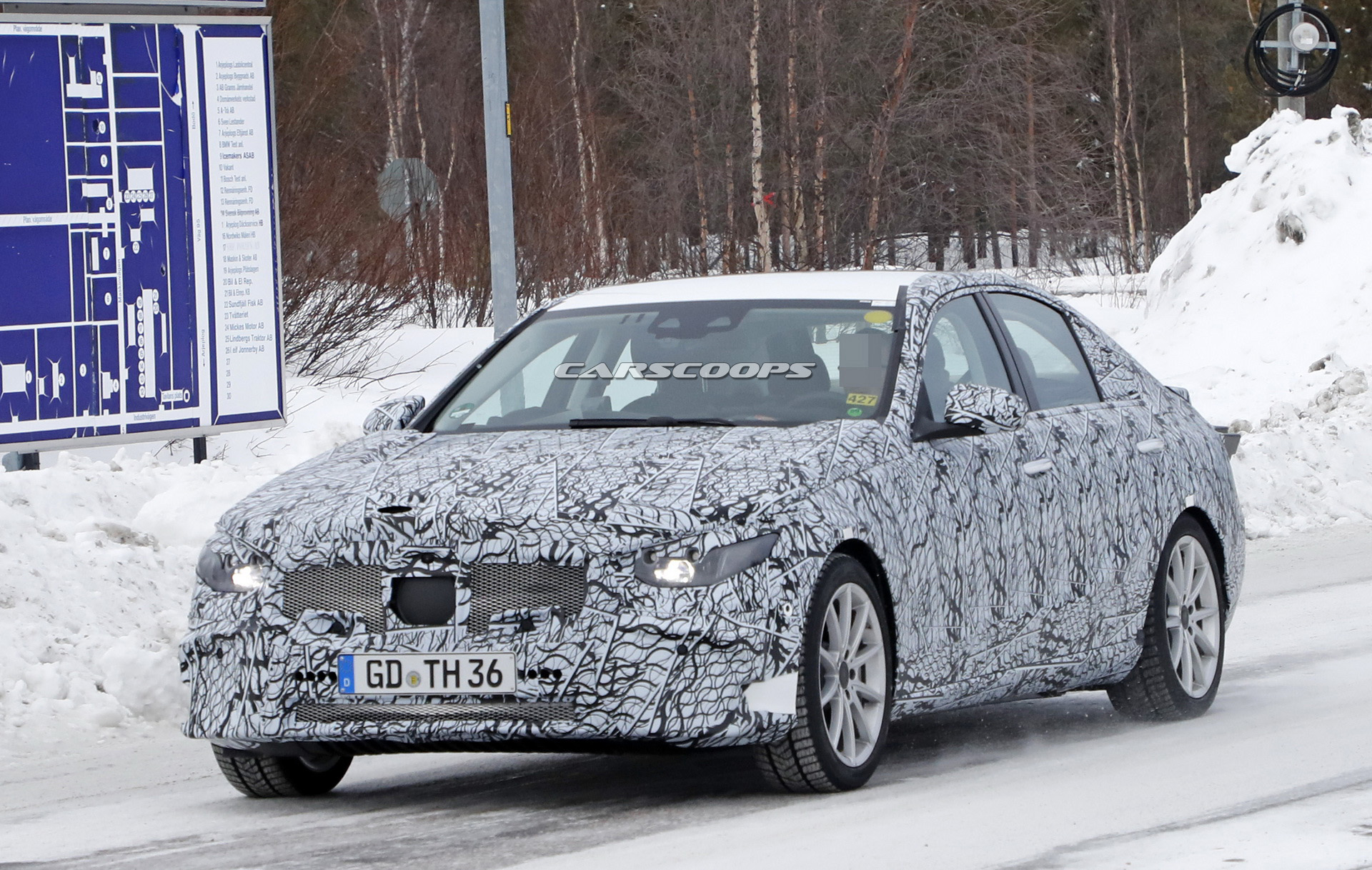After recently coming across Mercedes’ all-new 2021 C-Class undergoing cold weather testing in prototype form, we now have proof that the plug-in hybrid version of the model is being developed simultaneously.
Unlike with today’s C 350e model, the all-new C-Class PHEV will apparently switch to a left-rear fender charging port, as opposed to a rear bumper one. It’s definitely a more conservative approach, one that should also help keep the rear design clean.
Gunning for the BMW 330e
Mercedes’ all-new C-Class will sit on a modified MRA2 platform and is expected to stay roughly the same size as its predecessor, at least on the outside. In plug-in hybrid guise, it will exist as a direct rival to BMW’s latest electrified 3-Series, the 330e.
The latter offers a combined powertrain output of 252 PS (248 HP) and 309 lb-ft (420 Nm) of torque. It also has an XtraBoost function, which adds 41 PS (40 HP) on demand for a total of 293 PS (288 HP). As for its all-electric range, it’s estimated at 60 km (37 miles), roughly 50% more than in the previous 330e.
So why are these stats important for the C-Class PHEV? Simply because it will have to put up either similar or better numbers. Right now, the C 350e is good for 279 PS (275 HP) and 442 lb-ft (600 Nm) of torque, and has a range of up to 31 km (19 miles) in all-electric mode – this has to be improved.
In terms of on-board tech, we expect Mercedes to feed its all-new C-Class the latest MBUX infotainment system, meaning it will have a fully digital dashboard with excellent smartphone connectivity.
As for styling, whether it be the plug-in hybrid or the regular version, the next-gen C-Class should take after the new S-Class, which we know is coming with a sleeker exterior and a horizontal taillight design for the rear end.
Mercedes is unlikely to debut the C-Class PHEV (expected to be branded as EQ Boost) anytime soon, judging by how heavy the camouflage is on recently spotted prototypes. We therefor expect it to debut sometime next year as a 2021 model.



